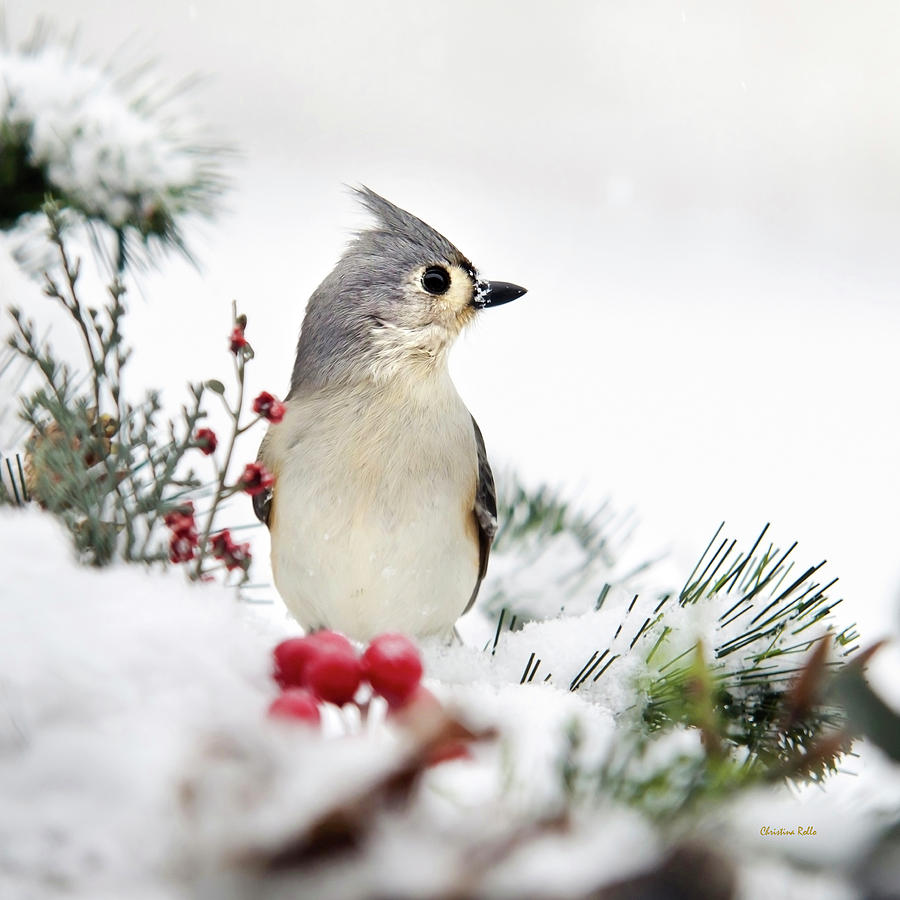By Stephanie Marie Uhranowsky
Come December, we will have said goodbye to many of our resident summer birds and the migrants who pass through in the fall. But did you know that we have feathered friends who spend all four seasons with us? We’re also visited by birds who breed to the north but spend their winter vacation in the Keystone State.
Approximately 35 species of birds can be observed throughout winter. Though the greatest diversity of species might appear at feeders in wooded rural areas, urban area feeders will see their fair share of bird activity too!
Common and rare species alike can be found gathered around feeding stations. The type and variety of seed you provide influences the birds that stop by for a visit. If you wish to attract a variety of species, provide a variety of foods.
The best all-round seed is the black-oil sunflower seed. It’s preferred by many smaller species because it has a thin seed coat that is easy to crack open. It also has a high oil content that is nutritionally important. The striped sunflower seed is slightly larger but is very popular with blue jays and cardinals. Other popular seed types include white proso millet, safflower, nyjer, and peanuts. Peanuts can be offered whole, as shelled kernels, or as peanut hearts. The hearts are valuable because they are small and can be eaten by many smaller species of birds.
Suet is another type of food that can enhance your feeding station. It’s a high-quality animal fat that is sought-after in colder months when food is scarce. It’s particularly attractive to woodpeckers, chickadees, nuthatches, and titmice, but atypical feeder birds also enjoy it. Homemade suet can be pressed into holes of a log feeder, smeared directly onto the bark of trees, frozen into blocks for a suet feeder, or sliced into chunks for a feeder tray.
A water source is something to consider offering as well. Cold winter temperatures can mean a time of drought for birds. Bird baths provide opportunities for drinking and bathing and heaters can be used to prevent freezing. Ideally, you would place your birdbath near a tree with overhanging branches.
Common species you might see: Northern Cardinal, House Finch, American Goldfinch, Tufted Titmouse, Black-capped Chickadee, Blue Jay, White-breasted Nuthatch, Dark-eyed Junco, Mourning Dove, Downy Woodpecker, Red-Bellied Woodpecker, American Tree Sparrow, Carolina Wren, White-throated Sparrow, and Pine Siskin.
Other opportunities for winter bird watching include open, unfrozen bodies of water, fields of shrubs and grasses, thickets of trees, and areas with wild berries.
The Northeast Pennsylvania Audubon Society is the regional chapter of the National Audubon Society. The NEPA Audubon chapter includes about 650 members. The annual Audubon Art and Craft Festival is the organization’s major event. Proceeds support scholarships to college students pursuing an environmentally-related major and to youths and adult leaders for camps in Maine, Vermont and other camps closer to home. NEPAS also funds environmentally-focused school programs and educational opportunities. Stephanie Uhranowsky is the NEPA Audubon’s Sanctuary chair, managing the org’s two nature sanctuaries at Price-Simpson Wetlands and Browning Beaver Meadow.


